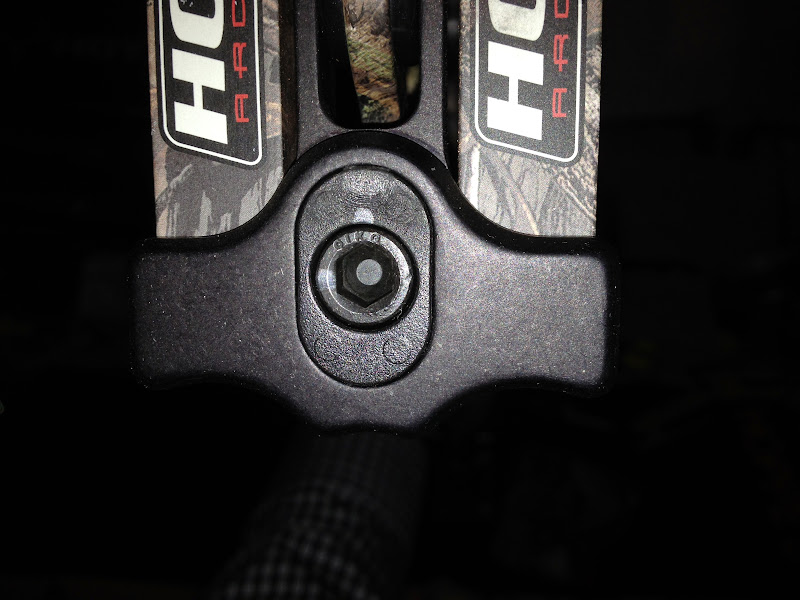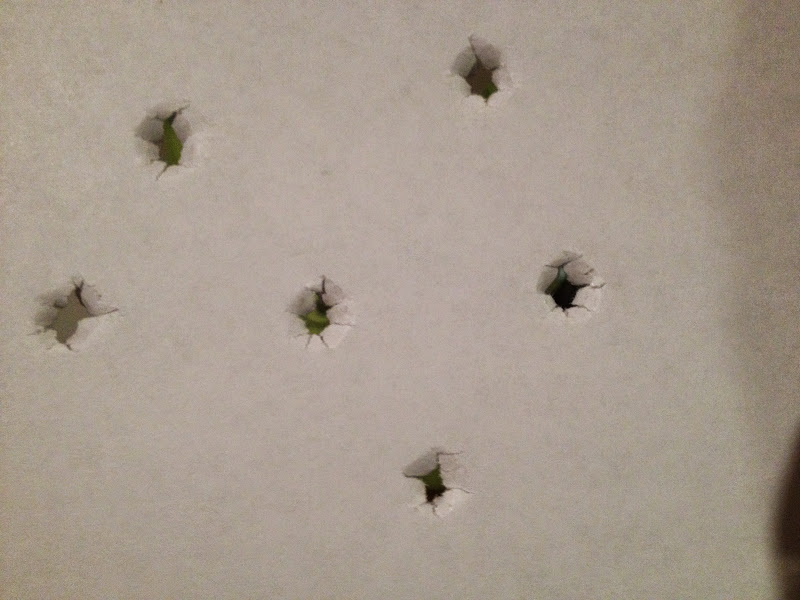Back at it. Pick my poison, huh? OK, well I figured the easiest option would be to take the quarter turn out of the top limb bolt. So it I did that. That was easy thanks to the marks I made on the limb bolts during my first step of this process (post 14).

Shot some bare shafts...

Nice.
However, not being one to leave well enough alone, I decided to reverse that change, and try the other poison. I figure this whole process is as much a means to an end (that end being a well-tuned bow) as it is a learning experience. So I put that quarter turn back into the top limb bolt, and slightly raised the rest (and made sure to sufficiently tighten the elevation screw this time..)
Again shot some bare shafts...

Sweet.
As you can see I shot three at 5 feet and another three at 10 feet, and got several bullet holes (I'm sure that my form/grip varies slightly from shot to shot, so I'm OK with the slight imperfections in those holes).
I'm guessing this is good enough to proceed?
Shot some bare shafts...
Nice.

However, not being one to leave well enough alone, I decided to reverse that change, and try the other poison. I figure this whole process is as much a means to an end (that end being a well-tuned bow) as it is a learning experience. So I put that quarter turn back into the top limb bolt, and slightly raised the rest (and made sure to sufficiently tighten the elevation screw this time..)
Again shot some bare shafts...
Sweet.

As you can see I shot three at 5 feet and another three at 10 feet, and got several bullet holes (I'm sure that my form/grip varies slightly from shot to shot, so I'm OK with the slight imperfections in those holes).
I'm guessing this is good enough to proceed?


 , I guess my questions are: Is it correct to say that a bow can be tuned according to the manufacturer's specs, but ultimately it must then be tuned to a specific individual and his way of shooting (within reason)? If so, at what point do you attribute imperfect arrow flight to the shooter and not the bow so as to not start 'chasing your tail' changing the bow?
, I guess my questions are: Is it correct to say that a bow can be tuned according to the manufacturer's specs, but ultimately it must then be tuned to a specific individual and his way of shooting (within reason)? If so, at what point do you attribute imperfect arrow flight to the shooter and not the bow so as to not start 'chasing your tail' changing the bow?